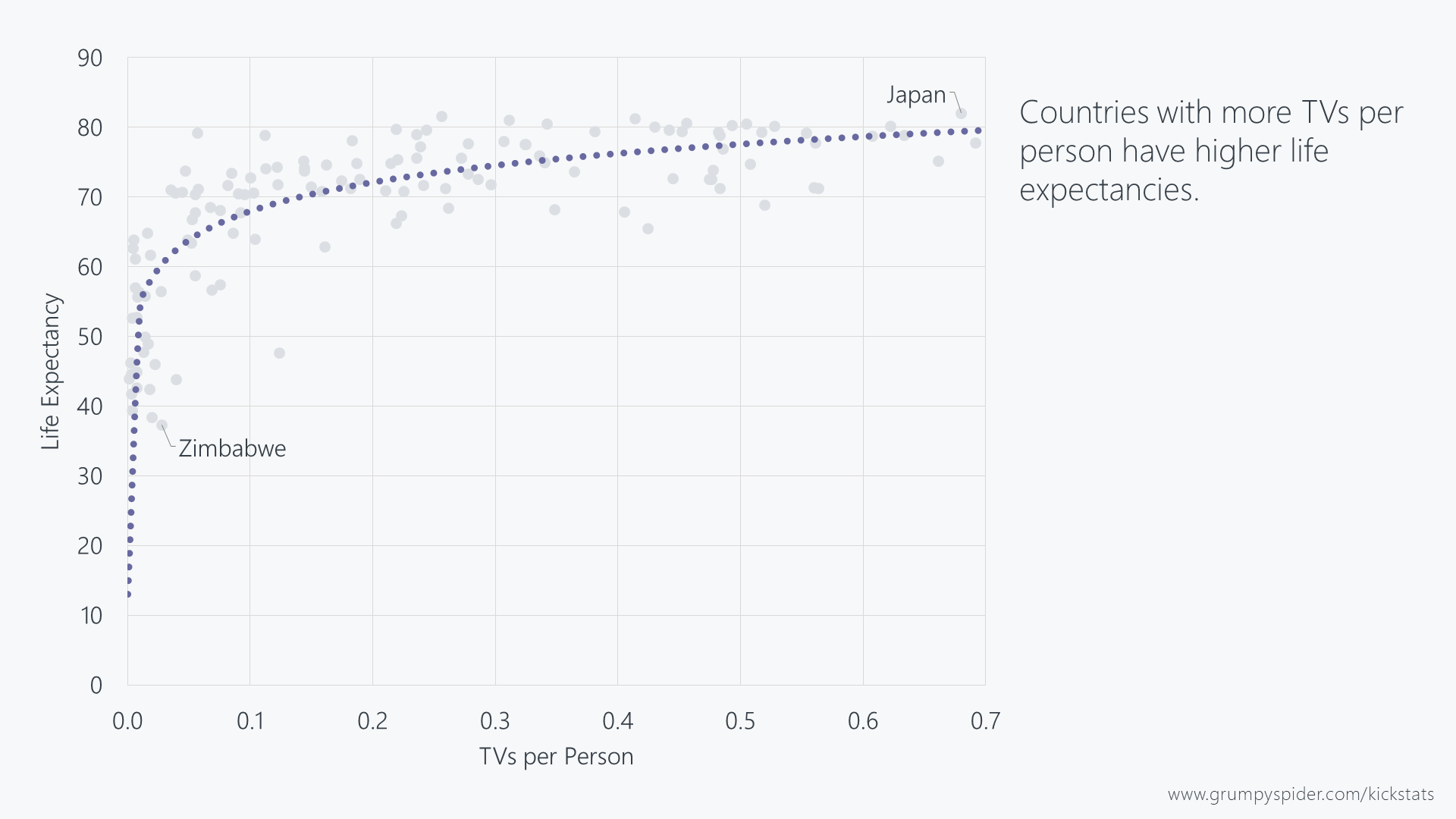Photo by Evan Dennis on Unsplash
Did you know there’s a link between a population’s life expectancy and the average number of TVs per person? It’s true. You can increase your lifespan just by getting another TV!

Now, if you have your wits about you, you may think that’s an absolutely ridiculous claim – and you’d be right! Of course buying another TV isn’t going to increase your lifespan. The reason more TVs correlates to longer life spans has nothing to do with TVs at all; it has everything to do with a particular lurking variable.
What are Lurking Variables?
Lurking variables are variables that influence your analysis, but aren’t accounted for in your study. They’re often hidden in the background and can even be completely unknown to the researcher – hence the name “lurking variable”.
In this example, the lurking variable is wealth. The more wealthy a population is, the more money it has to spend on TVs and healthcare.
That’s a silly example, I know, but it gets an important point across well. Correlation does not imply causation. Sometimes there are other factors at play that we’re just not aware of. This is one of the reasons why data analysis and statistics can be so tricky.
Kickstarter data is no exception. It’s common to hear people talk about what day of the week is best to launch a project, or how campaign length affects your chance of success, but it’s really important that we don’t assume causation too quickly. It’s only after a thoughtful analysis that accounts for many different factors that we can safely say there is true causation there.
And that’s what I plan to do with this Kickstats blog series. I want us to get as close as we can to finding out just what exactly causes a campaign’s chance of success to increase or decrease. And hopefully we’ll have some fun along the way!

Leave a Reply